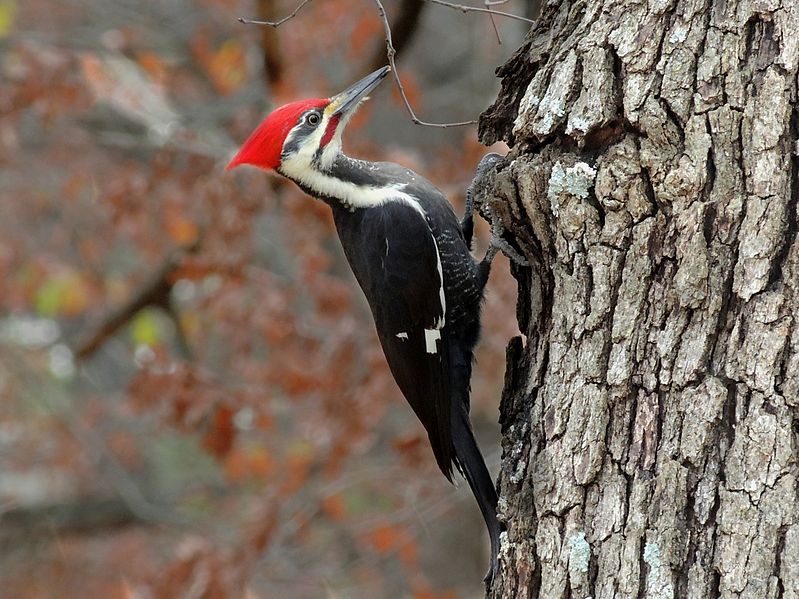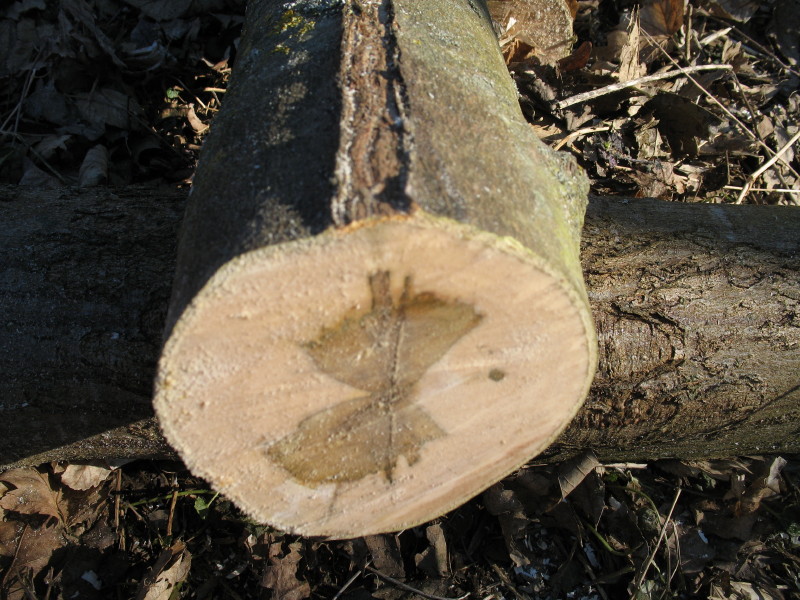[This blog post has been provided by Bec Wolfe-Thomas, an administrator for the Garden Professors blog group on Facebook.]

Woodpeckers (Picidae) frequently get a bad rap from gardeners. It’s often their impression that the birds irreparably damage trees, but this is untrue. Most woodpeckers are insect eaters; they can hear insects under the bark and in the wood of trees. They then target their drilling with uncanny precision to get their meal. This removal of insect pests, such as emerald ash borer, benefits the tree.

And what about the feeding holes left in the tree? This is an exciting bit of tree physiology! Trees are able to compartmentalize or isolate the wounds. After the woodpecker has made a hole to retrieve the insects within, the tree starts compartmentalizing the wound. How long it takes for a tree to compartmentalize a wound and close it depends on species and climate factors.

Below are photos of woodpecker holes in various states of compartmentalization, from freshly drilled to completely compartmentalized and closed holes. Woodpeckers help keep trees healthy by preventing large pest infestations. And while the small feeding holes might be an aesthetic concern to gardeners, they’re only temporary. They will eventually be compartmentalized and closed, and the tree will be healthier in the long run by having fewer pests.


[Please note the larger holes excavated for nesting will compartmentalize but will not close over time.]





What a nice set of images of callus forming! Thank you. But I am still hoping that you will do a piece on rock dust as a soil amendment. Some people seem to think that anything that contains crystals will help soil. Doesn’t make sense to me, and I get some pretty aggressive questions about it. There are some nice videos on YouTube made by a man who trialed some rock dusts in his garden with poor results, but I could use some help explaining this issue.
Based on this article, I am more than happy to welcome pileated woodpeckers into my garden. Besides the good they do, they are such gorgeous birds to observe.
What about their relatives, the yellow-bellied sapsuckers? Have they any redeeming qualities?
Like many woodpeckers, they do eat insects. The “sap holes” they excavate are used by a wide variety of other creatures. Butterflies, moths, bees, wasps, and other insects will feed at them. Their presence attracts other predators.
Hummingbirds and other birds enjoy the easy access to sap. Even squirrels will treat themselves to the sugary sap.
Please keep in mind sapsuckers and all woodpeckers are protected species.
Yes they do have their place and they do eat a lot of insects. While there are some birch species that tend to have some difficulties with over feeding most trees do not have a problem with sap sucker damage.
I’m glad woodpeckers are of benefit to our trees. I love seeing them!
I would like to clarify the terminology used. Compartmentalization refers to the establishment of chemical barriers to decay within the tree, such as is illustrated in the Wikimedia photo. The other photos illustrate closure of the holes with wound wood. Although the holes have closed, decay is still present and active within the cavity, and potentially will weaken the trunk to the point where it will break.
I don’t think there’s any way to know whether decay is still present, and in fact I doubt it would be present in most cases. Comparmentalization happens relatively quickly, while wound wood deposition is slower.
Charles raises a good point that the article is missing some important context regarding CODIT as a model. First, the modern usage is compartmentalization of damage, rather than decay, in trees. More importantly, the article doesn’t address all four walls in the model. The photos appear to show that the first three being compromised (vascular structures vertically, rays laterally in circumference, and previous growth increments moving inward). Shigo’s research demonstrated that compromising those “reaction zones” is more likely to lead to significant internal decay. The wound closure that was addressed in the article is the barrier zone, or new growth that occurs after the injury, which is chemically strong in resisting the spread of decay after damage. Those injuries have the potential to lead to significant internal decay, possibly creating a cavity the size of the injury when the damage occurred. Western red-cedar is generally decay resistant, but hollows are not uncommon. That tree may have a weakened structure due to the injury. The extent of decay could be evaluated with sounding, resistance drilling, or sonic tomography. If the tree was being evaluated for risk to people, those types of tests could be warranted. If its a habitat tree, injuries like that are likely a benefit. The tree’s response to the injury is reasonably foreseeable, but whether that is good, bad, or irrelevant depends on the full context.